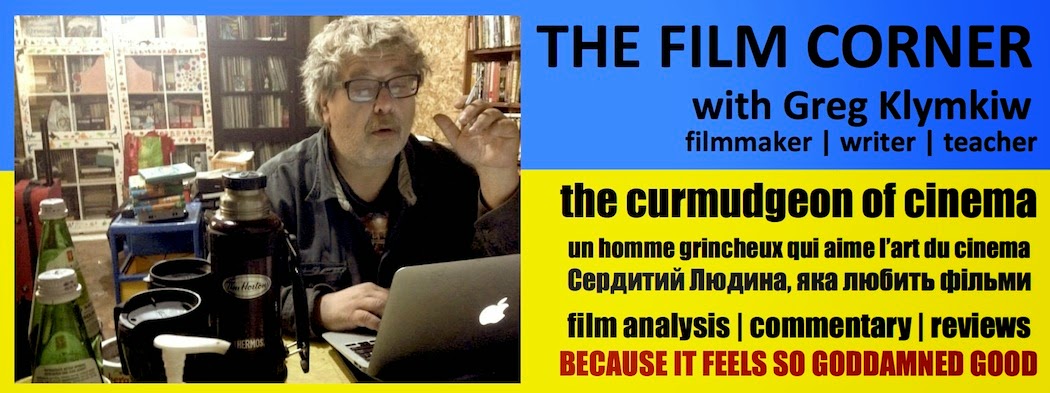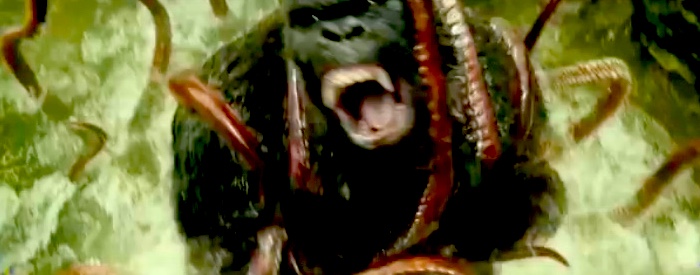 |
| The eyes have it. The eyes always have it. |
Dir. John Ainslie
Scr. Ainslie and Kimberly-Sue Murray
Starring: Kimberly-Sue Murray, Christian McKenna, Janet Porter
Review By Greg Klymkiw
A pretty young Uber driver (Kimberly-Sue Murray) shows up to collect a fare in a quiet, leafy Toronto neighbourhood and comes face-to-face with something insidious and decidedly unexpected. She knocks on the door. It opens so violently, both she and the audience jump. On the other side of the divide, a tall, brawny, bearded, bulletheaded creep (Christian McKenna) with "prick" written all over his face greets our wide-eyed, hoodie-and-cut-off-shorts-adorned beauty with a mean-ass, "The fuck do you want?"
This is clearly not her fare. What is clear, is that bullethead is a mean, abusive sonofabitch and that his female companion (Janet Porter) is trapped in an altercation in which he's got the upper hand and keeping her against her will.
 |
| A shameless abuser answers his door. |
This is all plenty disturbing, but even more alarming is the telephone call twixt our Uber Babe and a 911 dispatcher who claims a police car will not be sent out since no act of domestic violence, nor threats have been uttered. It's obvious to our leading lady and us, that all is not right in this household.
There are, unfortunately, laws - laws to protect perpetrators, to offer no solace to victims and to put the common sense of those who bear witness into question.
John Ainslie's grim, scary movie she came knocking is one of the best short dramatic films I've seen in years. His taut direction keeps us squirming in our seats from beginning to end and the screenplay (by Ainslie and star Murray) offers ultra-charged suspense, vital social commentary and perhaps most wisely, serves up the notion of two sides (and often many more) to all stories.
An act of violence that occurs in the film never comes as a surprise, but that's not what the picture boils down to. Though the denouement is hardly ambiguous, it's supremely, throat-catchingly infused with the kind of food-for-thought that is rooted, where it should be: emotionally, dramatically, incisively and effectively.
 |
| Watching: Creepy. Scary. Necessary. |
Though it works perfectly as a short film, it leaves us wanting to spend far more time with its characters. One can imagine the whole situation playing out as a delectably layered cat-and-mouse suspense picture over a feature length. The only thing that doesn't quite work is that the film plays out with a mostly percussive musical score. There's nothing especially wrong with the music, but the movie cries out for no score. The film is so beautifully shot (compositions bordering on greatness), played so perfectly by its actors and edited with such precision that the picture's "musical" qualities might have been better served by the bolder choice of utilizing soundscape over score. (The film ends with a dazzling image, a hideous breath on the soundtrack and a knock-you-on-your-ass cut to black/title that the score not only feels redundant over picture, but even over the end title credits.)
Ainslie directed the Polanski-inspired feature The Sublet and contributed to writing the screenplay for the cult feature Jack Brooks: Monster Slayer. He's clearly a force and talent to be reckoned with. Let's hope he makes a new film. And soon.
The Film Corner Rating: **** 4-Stars
she came knocking premieres at the Canadian Film Fest 2017 in Toronto.




















